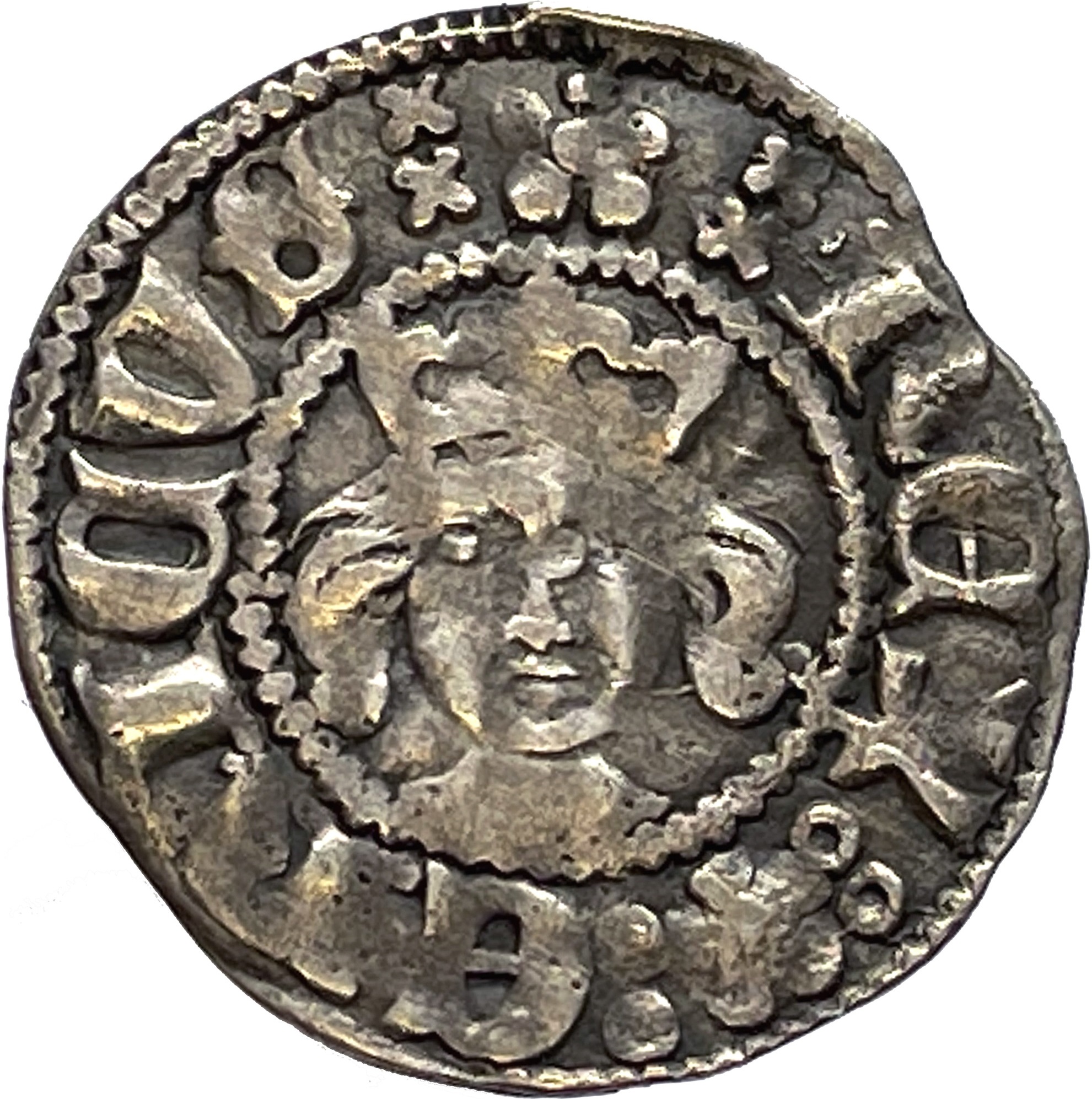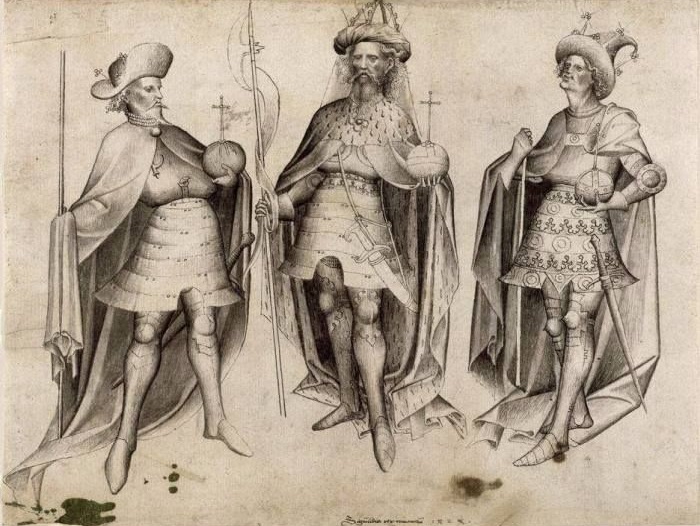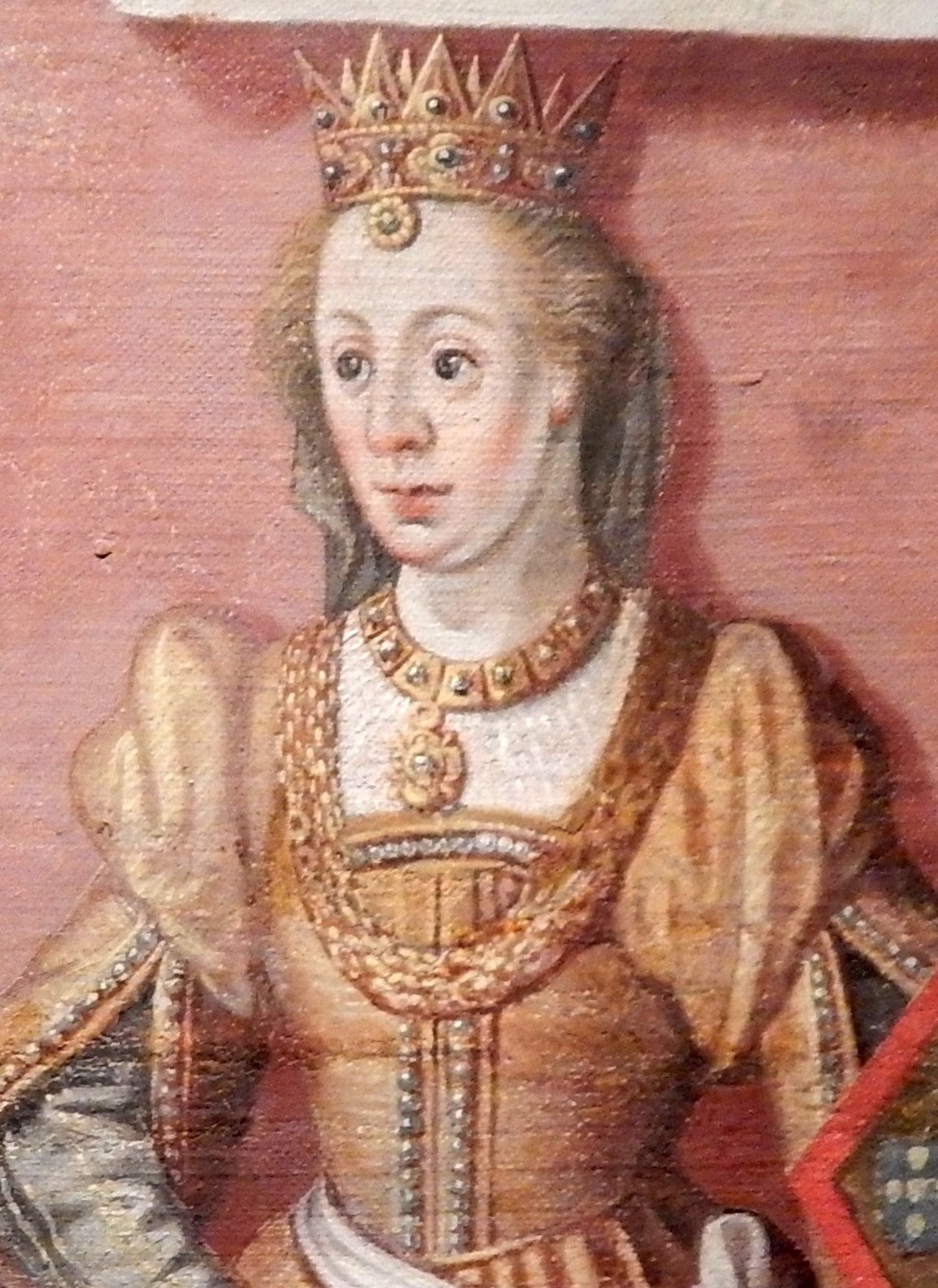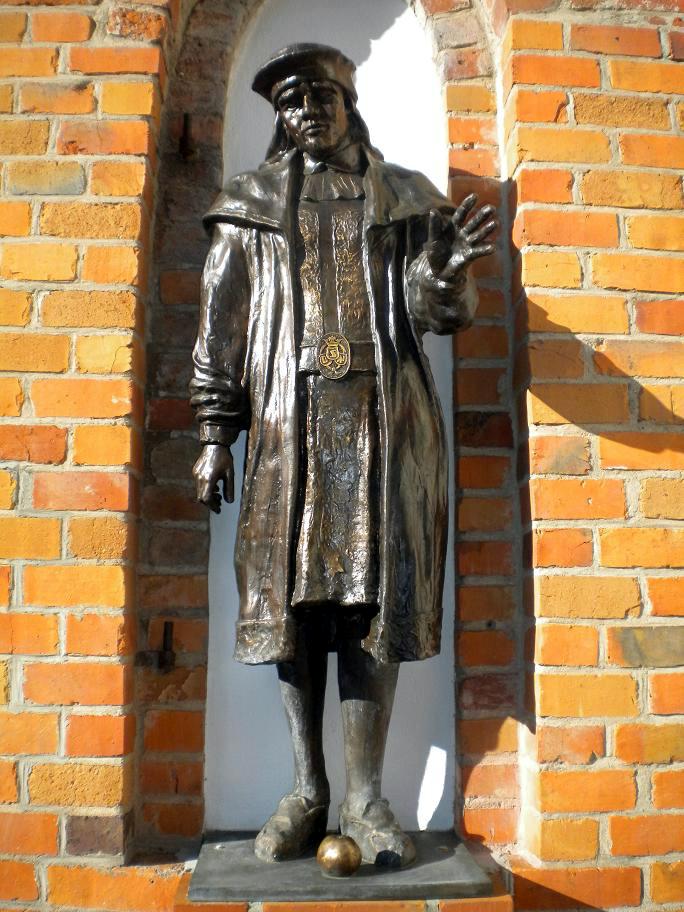1. Overview
Erik of Pomerania, born Bogusław in either 1381 or 1382, ruled the Kalmar Union from 1396 until 1439, initially as co-ruler with his great-aunt Margaret I of Denmark until her death in 1412. He is recognized as Erik III as King of Norway (1389-1442), Erik VII as King of Denmark (1396-1439), and Erik XIII as King of Sweden (1396-1434, 1436-39). The epithet "of Pomerania" was a pejorative term, implying he was an outsider to Scandinavia. His reign was marked by significant efforts to strengthen the union, notably through the introduction of the Sound Dues, which generated substantial income for the Danish crown. However, his rule was also characterized by prolonged conflicts with Holstein and the Hanseatic League, heavy taxation, and internal rebellions in Sweden and Norway, which ultimately led to his deposition from all three union kingdoms. Following his deposition, he inherited a portion of the Duchy of Pomerania and ruled it as duke until his death in 1459.
2. Early Life and Background
Erik's early life was shaped by his noble lineage and his designation as heir to the Scandinavian thrones by Margaret I, a pivotal figure in Nordic history.
2.1. Birth and Childhood
Erik was born as Bogusław in either 1381 or 1382 in Darłowo (formerly Rügenwalde), Pomerania, which is now part of Poland. He was the son of Wartislaw VII, Duke of Pomerania, and Maria of Mecklenburg-Schwerin. His mother, Maria, was the daughter of Henry III, Duke of Mecklenburg, and Ingeborg of Denmark, who was the elder sister of Margaret I of Denmark and daughter of Valdemar IV of Denmark. This lineage provided Erik with a legitimate claim to the Scandinavian thrones.
2.2. Education and Succession
In 1389, Bogusław was brought to Denmark to be raised by his great-aunt, Queen Margaret I. Margaret, who governed the kingdoms of Denmark, Norway, and Sweden, sought to ensure the unity and peace of her realm. She chose Bogusław as her heir and successor, believing he possessed sufficient qualifications through his maternal lineage. Upon his arrival in Denmark, his name was changed to the more Nordic-sounding `ErikErikDanish`.
3. Kalmar Union and Accession
Erik's rise to power involved his gradual accession to the thrones of the three Scandinavian kingdoms, culminating in the formal establishment of the Kalmar Union under his rule.
3.1. Accession as King of Norway
On September 8, 1389, Erik was formally hailed as King of Norway at the Ting in Trondheim. While some accounts suggest he may have been crowned King of Norway in Oslo in 1392, this remains a disputed point among historians. His father, Wartislaw VII, died between November 1394 and February 23, 1395, at which point Erik inherited his ducal titles in Pomerania.
3.2. Accession as King of Denmark and Sweden
In 1396, Erik was proclaimed king in Denmark, and subsequently in Sweden. This occurred after Margaret I had successfully deposed Albert of Sweden, consolidating her control over the Swedish throne.
3.3. Coronation and Kalmar Union
On June 17, 1397, Erik was crowned king of the three Nordic countries in the cathedral of Kalmar, Sweden. This event formally marked the establishment of the Kalmar Union, a unified realm under a single monarch. A union treaty was drafted concurrently with his coronation, solidifying the political alliance between Denmark, Norway, and Sweden.

3.4. Co-rule with Margaret I
Despite his coronation, Queen Margaret I remained the `de factode factoLatin` ruler of the three kingdoms. Erik effectively co-ruled with her, and her authority continued until her death in 1412. This period allowed Erik to gain experience in governance under Margaret's guidance.
4. Reign
Erik's period of sole rule was characterized by ambitious policies, significant foreign conflicts, and internal unrest that ultimately challenged the stability of the Kalmar Union.
4.1. Regency and Co-rule
During the initial phase of his reign, Erik served as co-ruler alongside Queen Margaret I, who maintained effective control over the three kingdoms until her death in 1412. Following Margaret's passing, Erik assumed sole rule, embarking on a period marked by both strategic initiatives and considerable challenges.
4.2. Major Policies and Achievements
Erik implemented several significant policies aimed at strengthening his royal authority and the economic standing of Denmark within the union. In 1417, he made Copenhagen a royal possession, thereby securing its status as the capital of Denmark. He also asserted royal control over Copenhagen Castle, usurping its rights from the Bishop of Roskilde, ensuring the castle's occupation by the crown thereafter.

Perhaps Erik's most impactful and far-reaching act was the introduction of the Sound Dues (`ØresundtoldenØresundtoldenDanish`) in 1429. This toll required all ships passing through the Sound between Denmark and Sweden to pay a fee, whether entering or leaving the Baltic Sea. This policy, which remained in effect until 1857, secured a substantial and stable income for the Danish kingdom, contributing significantly to its wealth. To enforce these demands and control navigation through the Sound, Erik oversaw the construction of Krogen, a powerful fortress at the narrowest point of the Sound, in the early 1400s. This initiative not only demonstrated his interest in Danish trade and naval power but also led to the prosperity of the town of Elsinore.
4.3. Foreign Relations and Conflicts
Erik's reign was largely defined by his diplomatic endeavors and protracted conflicts. In 1402, Queen Margaret initiated negotiations with King Henry IV of England for a potential alliance between England and the Nordic union. The proposal included a double wedding: Erik would marry King Henry's second daughter, Philippa of England, and Henry IV's heir, Henry, Prince of Wales, would marry Erik's sister, Catherine of Pomerania (c. 1390-1426). While the double wedding did not materialize, Erik's marriage to Philippa of England was successfully negotiated. On October 26, 1406, the 12-year-old Philippa married Erik in Lund, establishing a defensive alliance with England.
Much of Erik's sole rule was consumed by his persistent conflict with the Counts of Schauenburg and Holstein. He sought to regain South Jutland (Schleswig), a territory that Queen Margaret had previously gained influence over. However, Erik chose a strategy of warfare over negotiations, which proved to be a devastating and ultimately unsuccessful approach. This protracted war not only failed to secure new conquests but also resulted in the loss of South Jutlandic areas that he had already controlled. Despite exhibiting considerable energy and steadfastness during this conflict, Erik also displayed a notable lack of diplomatic skill. In 1424, a verdict by Sigismund, King of Germany, of the Holy Roman Empire recognized Erik as the rightful ruler of South Jutland, but this ruling was ignored by the Holsteiners. The prolonged war severely strained the Danish economy and undermined the unity of the northern kingdoms.
Erik's policies also led to significant challenges with other Baltic powers, particularly the Hanseatic League. From 1426 to 1435, he was embroiled in war with the German Hanseatic League and Holstein. When the Hanseatic forces and Holsteiners attacked Copenhagen in 1428, King Erik was absent from the city, having traveled to Sorø Abbey, and did not return. The defense of the capital was instead managed by Queen Philippa. In April 1435, Erik was compelled to sign the Peace of Vordingborg with the Hanseatic League and Holstein. Under the terms of this agreement, Hanseatic cities were exempted from the Sound Dues, and the Duchy of Schleswig was formally ceded to the Count of Holstein.
4.4. European Tour and Pilgrimage
Erik was described by the future Pope Pius II as having "a beautiful body, reddish yellow hair, a ruddy face, and a long narrow neck... alone, without assistance, and without touching the stirrups, he jumped upon a horse, and all women were drawn to him, especially the Empress, in a feeling of longing for love." This charm and his worldly demeanor were evident during his extensive European tour in the 1420s.

From 1423 until May 1425, Erik undertook a significant pilgrimage to Jerusalem. Upon his arrival, he was dubbed a Knight of the Holy Sepulchre by the Franciscan Custos of the Holy Land. Subsequently, Erik himself conferred the same honor upon his fellow pilgrims, including Ivan Anz Frankopan. During his absence, Queen Philippa capably served as regent of the three kingdoms, governing from Copenhagen.
4.5. Internal Rebellions and Social Impact
By the 1430s, Erik's policies began to unravel, leading to widespread discontent and significant internal rebellions that severely destabilized the Kalmar Union and weakened royal authority. His heavy taxation on Norway and Sweden, imposed to address financial difficulties stemming from his prolonged wars, fueled growing resentment in both kingdoms.
In 1434, farmers and mine workers in Sweden initiated a national and social rebellion, which was swiftly leveraged by the Swedish nobility to undermine the King's power. This uprising, known as the Engelbrekt rebellion (1434-1436), was led by the Swedish nobleman Engelbrekt Engelbrektsson (c. 1390 - May 4, 1436). The Swedish populace had been particularly affected by the ongoing war with the Hanseatic League (1426-1435), which disrupted trade and hindered Swedish exports to regions such as Schleswig, Holstein, Mecklenburg, and Pomerania. The rebellion significantly eroded the unity of the Kalmar Union, leading to the temporary expulsion of Danish forces from Sweden.
Norway also experienced a series of uprisings. A rebellion in 1436, led by Amund Sigurdsson Bolt (1400-1465), resulted in a siege of Oslo and Akershus Castle, though it eventually concluded with a ceasefire. A new rebellion erupted in Eastern Norway in 1438, led by Hallvard Graatop, but this uprising was also suppressed. These rebellions underscored the deep social discontent and the growing opposition to Erik's rule, highlighting his inability to maintain stability and control over his vast, multi-kingdom realm.
5. Personal Life
Erik's personal life included his important dynastic marriage and a later controversial relationship.
5.1. Marriage to Philippa of England
On October 26, 1406, Erik married Philippa of England in Lund. Philippa, who was 12 years old at the time, was the second daughter of King Henry IV of England. This marriage was a significant diplomatic event, forging a purely defensive alliance between the Kingdom of England and the Nordic union.

5.2. Royal Mistress and Scandal
After Queen Philippa's death in 1430, Erik entered into a relationship with her former lady-in-waiting, Cecilia. She became his royal mistress and later his morganatic spouse. This relationship was widely regarded as a public scandal and was explicitly mentioned in the official complaints made by the royal council against the King, reflecting the disapproval of the nobility and the public.
6. Deposition and Later Years
The mounting opposition to Erik's rule, fueled by his unpopular policies and the internal rebellions, eventually led to his deposition from the thrones of the Kalmar Union.
6.1. Political Opposition and Deposition
The Danish nobility increasingly opposed Erik's rule, particularly his attempts to centralize power and his financial demands. Their discontent reached a peak when they refused to ratify his choice of his cousin, Bogislaw IX, Duke of Pomerania, as the next king of Denmark. In response to this opposition, Erik departed Denmark and established a permanent residence at Visborg Castle in Gotland. This act of perceived abandonment led to his formal deposition through a `coup d'étatcoup d'étatFrench` by the National Councils of Denmark and Sweden in 1439.
In 1440, Erik was succeeded by his nephew, Christopher of Bavaria, who was chosen to rule both Denmark and Sweden. Initially, the Norwegian Riksråd (National Council) remained loyal to Erik and wished for him to continue as King of Norway. In September 1439, Erik had appointed Sigurd Jonsson as `drottsetedrottseteNorwegian` (regent), tasking him with governing Norway in the King's name. However, with Erik isolated in Gotland, the Norwegian nobility also felt compelled to depose him through a `coup d'étatcoup d'étatFrench` in 1440. He was formally deposed in 1442, at which point Sigurd Jonsson stepped down, and Christopher was elected King of Norway.
Upon King Christopher's death in 1448, the succession became contentious. Erik's kinsman, Christian of Oldenburg (son of Erik's earlier rival, Count Dietrich of Oldenburg), ascended to the Danish throne, while Karl Knutsson Bonde became King of Sweden. A rivalry ensued between Karl and Christian for the Norwegian throne, which culminated in Karl being forced to relinquish his claim to Norway in favor of King Christian in 1450.
6.2. Duke of Pomerania
For a decade following his deposition, Erik resided in Gotland, where he engaged in piracy against the merchant trade in the Baltic Sea.
In 1449, Erik succeeded Bogislaw IX as Duke of Pomerania, ruling the small partition of Pomerania-Rügenwalde, part of the Duchy of Pomerania-Stolp (`Księstwo SłupskieKsięstwo SłupskiePolish`), as "Erik I". He continued to rule this duchy until his death on September 24, 1459, at Darłowo Castle (`Schloss RügenwaldeSchloss RügenwaldeGerman`) in Pomerania. He was buried in the Church of St. Mary's in Darłowo. There is an account from the Burgermeister of Kiel to King Christian III of Denmark stating that Erik encouraged a joint expedition by Didrik Pining and Hans Pothorst to investigate the Northwest Passage. This voyage, alleged to have reached Greenland and involved combat with the Inuit, reportedly occurred after Erik's death.


7. Titles and Styles
Erik's full title was: "King of Denmark, Sweden and Norway, the Wends and the Goths, Duke of Pomerania".
8. Assessment and Legacy
Erik of Pomerania's reign is subject to varied historical assessments, recognizing both his contributions to the Kalmar Union and the significant criticisms leveled against his rule.
8.1. Positive Contributions
Contemporary accounts describe Erik as an intelligent, visionary, energetic, and firm character. He was also noted as a charming and well-spoken man of the world, qualities highlighted during his extensive European tour in the 1420s. The future Pope Pius II famously described his physical attractiveness and charisma.

His most enduring positive contribution was the introduction of the Sound Dues in 1429. This innovative policy provided a substantial and stable income for the Danish crown, making the kingdom relatively wealthy and fostering the growth of the town of Elsinore. This initiative demonstrated Erik's foresight in promoting Danish trade and naval power, securing a crucial economic advantage for centuries. His decision to make Copenhagen a royal possession and his construction of the Krogen fortress also reflect a strategic vision for strengthening the union's core.
8.2. Criticism and Controversy
Despite his positive attributes, Erik's rule faced considerable criticism and controversy. He was often described as having a hot temper, a lack of diplomatic sense, and an obstinacy that bordered on mulishness. His epithet, "of Pomerania," was intended pejoratively, suggesting he was an outsider who did not truly belong in Scandinavia.

His prolonged and devastating conflict with the Counts of Schauenburg and Holstein over South Jutland (Schleswig) is a major point of criticism. Erik's preference for warfare over negotiation led to significant economic strain on Denmark and ultimately resulted in the loss of territories rather than their recovery. Similarly, his war with the Hanseatic League (1426-1435) further exacerbated economic difficulties and strained relations with crucial trading partners.
The heavy taxation he imposed on Norway and Sweden to finance his wars and other endeavors led to widespread discontent and major internal rebellions, such as the Engelbrekt rebellion in Sweden and subsequent uprisings in Norway. These revolts severely weakened the unity of the Kalmar Union and demonstrated Erik's inability to effectively manage internal dissent or maintain the loyalty of his subjects across all three kingdoms. The growing power of the nobility, which he struggled to contain, ultimately contributed to his deposition from all three thrones, marking a significant decline in royal authority during his later years. His relationship with his royal mistress, Cecilia, after Queen Philippa's death, also became a public scandal, further eroding his standing among the elite.